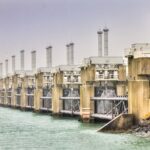Pacific islands adapt to climate change
By David Brooks (AFP)
WELLINGTON — New research has cast doubt on warnings that rising sea levels caused by climate change are slowly inundating low-lying Pacific islands.
Scientists have studied 27 low-lying Pacific islands, comparing aerial photos from 60 years ago with modern satellite images, according to an article published Wednesday in The New Scientist.
Paul Kench of the University of Auckland in New Zealand and Arthur Webb at the South Pacific Applied Geoscience Commission in Fiji found only four of those 27 islands had declined in size despite an average rise in sea level of 12 centimetres (4.7 inches) during the 60-year period.
Half of the rest had remained the same size and the other half had increased in size.
Kench told AFP Thursday the study shows that islands respond in different ways to climate change and rising seas.
“One thing our results tell us there is no one model fits all kind of scenario,” Kench said.
It was important to have a sensible debate over the impact of climate change, “rather than just saying the sea level’s going up and the islands must all disappear”.
The study says some islands are growing because waves, currents and winds are pushing coral debris from the surrounding reefs onto the shore.
Although this study only involved studying the land area, Kench said his previous research had shown cyclones and storms — which are predicted to become more frequent with climate change — also often played an important role in increasing the height of islands.
“I’ve been in Tuvalu and know when cyclones hit Tuvalu, the waves go right across the island and in doing so, they are ripping up coral from the reef and beach and depositing them on the island surface.
“So there’s a natural mechanism of how these islands can rise vertically and in many cases can keep pace with sea level rise projected over the next century.”
Low-lying Pacific island nations such as Kiribati and Tuvalu have said they are suffering increasing problems due to rising sea levels — including crop destruction and water contamination.
They say their citizens face the prospect of having to resettle in other countries as their islands are slowly submerged.
The study by Kench and Webb found that seven islands in one of Tuvalu’s nine atolls have grown in area by more than three percent on average since the 1950s, with one island expanding nearly 30 percent.
A lot more research needed to be done to see how low-lying Pacific atolls would be affected by climate change, Kench said.
“We’ve looked at 27 islands out of around 20,000, so it’s a very small sample, but it’s given us some clues and I think we’ve got to expand that sample.”
He said more research could lead to better identifying which islands in a Pacific country would best adapt to rising sea levels and villages could possibly be relocated to those islands.
More work also needed to be done to see how water tables and crops adapted to climate change.
“An important question is — if islands still exist, will they still be able to carry human communities?”
Bron: afp






Geef een reactie